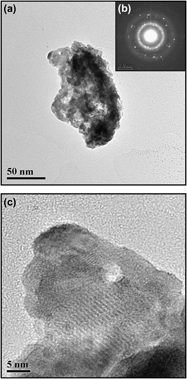Crossref Citations
This article has been cited by the following publications. This list is generated based on data provided by
Crossref.
Zang, Chenpeng
Sun, Hong
Tse, John S.
and
Chen, Changfeng
2012.
Indentation strength of ultraincompressible rhenium boride, carbide, and nitride from first-principles calculations.
Physical Review B,
Vol. 86,
Issue. 1,
Zang, Chenpeng
Sun, Hong
and
Chen, Changfeng
2012.
Unexpectedly low indentation strength of WB3and MoB3from first principles.
Physical Review B,
Vol. 86,
Issue. 18,
Rohrer, Gregory S.
Affatigato, Mario
Backhaus, Monika
Bordia, Rajendra K.
Chan, Helen M.
Curtarolo, Stefano
Demkov, Alex
Eckstein, James N.
Faber, Katherine T.
Garay, Javier E.
Gogotsi, Yury
Huang, Liping
Jones, Linda E.
Kalinin, Sergei V.
Lad, Robert J.
Levi, Carlos G.
Levy, Jeremy
Maria, Jon‐Paul
Mattos, Louis
Navrotsky, Alexandra
Orlovskaya, Nina
Pantano, Carlo
Stebbins, Jonathan F.
Sudarshan, T. S.
Tani, Toshihiko
Scott Weil, K.
and
Green, D. J.
2012.
Challenges in Ceramic Science: A Report from the Workshop on Emerging Research Areas in Ceramic Science.
Journal of the American Ceramic Society,
Vol. 95,
Issue. 12,
p.
3699.
Li, Bing
Sun, Hong
Zang, Chenpeng
and
Chen, Changfeng
2013.
Fundamental constraints on the strength of transition-metal borides: The case of CrB4.
Physical Review B,
Vol. 87,
Issue. 17,
Zhong, Ming-Min
Kuang, Xiao-Yu
Wang, Zhen-Hua
Shao, Peng
Ding, Li-Ping
and
Huang, Xiao-Fen
2013.
Phase stability, mechanical properties, hardness, and possible reactive routing of chromium triboride from first-principle investigations.
The Journal of Chemical Physics,
Vol. 139,
Issue. 23,
Xie, Zhilin
Graule, Moritz
Orlovskaya, Nina
Andrew Payzant, E.
Cullen, David A.
and
Blair, Richard G.
2014.
Novel high pressure hexagonal OsB2 by mechanochemistry.
Journal of Solid State Chemistry,
Vol. 215,
Issue. ,
p.
16.
Guo, Shuqi
2014.
Formation of rhenium diboride via mechanochemical–annealing processing of Re and B.
Journal of the European Ceramic Society,
Vol. 34,
Issue. 16,
p.
4443.
Zhang, Miao
Lu, Mingchun
Du, Yonghui
Gao, Lili
Lu, Cheng
and
Liu, Hanyu
2014.
Hardness of FeB4: Density functional theory investigation.
The Journal of Chemical Physics,
Vol. 140,
Issue. 17,
Li, Bing
Sun, Hong
and
Chen, Changfeng
2014.
First-principles calculation of the indentation strength ofFeB4.
Physical Review B,
Vol. 90,
Issue. 1,
Xie, Z. L.
Blair, R. G.
Orlovskaya, N.
and
Payzant, E. A.
2015.
Hexagonal OsB2reduction upon heating in H2containing environment.
Advances in Applied Ceramics,
Vol. 114,
Issue. 2,
p.
114.
Xie, Z.
Terracciano, A. C.
Cullen, D. A.
Blair, R. G.
and
Orlovskaya, N.
2015.
High temperature Ir segregation in Ir–B ceramics: effect of oxygen presence on stability of IrB2and other Ir–B phases.
Advances in Applied Ceramics,
Vol. 114,
Issue. 8,
p.
429.
Xie, Zhilin
Blair, Richard G.
Orlovskaya, Nina
Cullen, David A.
Kata, Dariusz
Rutkowski, Paweł
Lis, Jerzy
Qin, Nan
T‐Raissi, Ali
and
Fahrenholtz, W.
2016.
Oxygen Interaction with Hexagonal OsB2 at High Temperature.
Journal of the American Ceramic Society,
Vol. 99,
Issue. 12,
p.
4057.
Xie, Zhilin
Blair, Richard G.
Orlovskaya, Nina
Cullen, David A.
Lapidus, Saul H.
Kata, Dariusz
Rutkowski, Paweł
and
Lis, Jerzy
2016.
In search of the elusive IrB2: Can mechanochemistry help?.
Journal of Solid State Chemistry,
Vol. 233,
Issue. ,
p.
108.
Zou, Canhui
Long, Ying
Zheng, Xin
Lin, Hua-Tay
and
Zhang, Fenglin
2017.
Effect of ball sizes on synthesis of OsB2 powders by mechanical alloying.
Ceramics International,
Vol. 43,
Issue. 18,
p.
17111.
Li, Xiaohong
Chagas da Silva, Maurício
and
Salahub, Dennis R.
2017.
First-principles calculations of the structural, mechanical, electronic and bonding properties of (CrB 2 ) n CrAl with n = 1, 2, 3.
Journal of Alloys and Compounds,
Vol. 698,
Issue. ,
p.
291.
Long, Ying
Zhang, Jinyang
Zou, Canhui
Lin, Hua‐Tay
An, Linan
Zhang, Fenglin
and
Wang, Chengyong
2017.
Synthesis of osmium borides by mechanochemical method.
Journal of the American Ceramic Society,
Vol. 100,
Issue. 6,
p.
2419.
Xie, Zhilin
DeLucca, Vincent
Haber, Richard A.
Restrepo, David T.
Todd, Jacob
Blair, Richard G.
and
Orlovskaya, Nina
2017.
Aluminium magnesium boride: synthesis, sintering and microstructure.
Advances in Applied Ceramics,
Vol. 116,
Issue. 6,
p.
341.
Zhang, Yunkun
Wan, Biao
Wu, Lailei
Li, Zhiping
Wang, Zhibin
Zhang, Jingwu
Gou, Huiyang
and
Gao, Faming
2017.
Revealing phase relations between Fe2B7and FeB4and hypothetical Fe2B7-type Ru2B7and Os2B7: first-principles calculations.
RSC Advances,
Vol. 7,
Issue. 71,
p.
44860.
Granados‐Fitch, Mizraim G.
Quintana‐Melgoza, Juan M.
Juarez‐Arellano, Erick A.
and
Avalos‐Borja, Miguel
2018.
Chemical stability of superhard rhenium diboride at oxygen and moisture ambient environmental conditions prepared by mechanical milling.
Journal of the American Ceramic Society,
Vol. 101,
Issue. 7,
p.
3148.
Mnatsakanyan, Raman
Davtyan, Davit
Zurnachyan, Alina
Kharatyan, Suren
Karakhanov, Edward
Akopyan, Argam
and
Manukyan, Khachatur
2018.
Microwave-assisted preparation and characterization of nanoscale rhenium diboride.
Ceramics International,
Vol. 44,
Issue. 18,
p.
22339.





